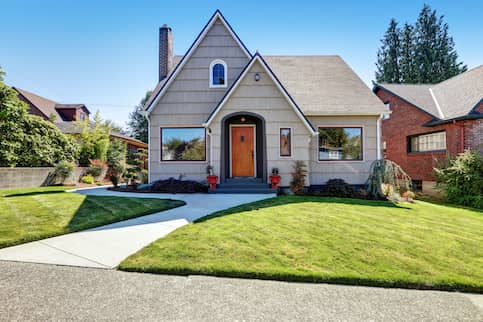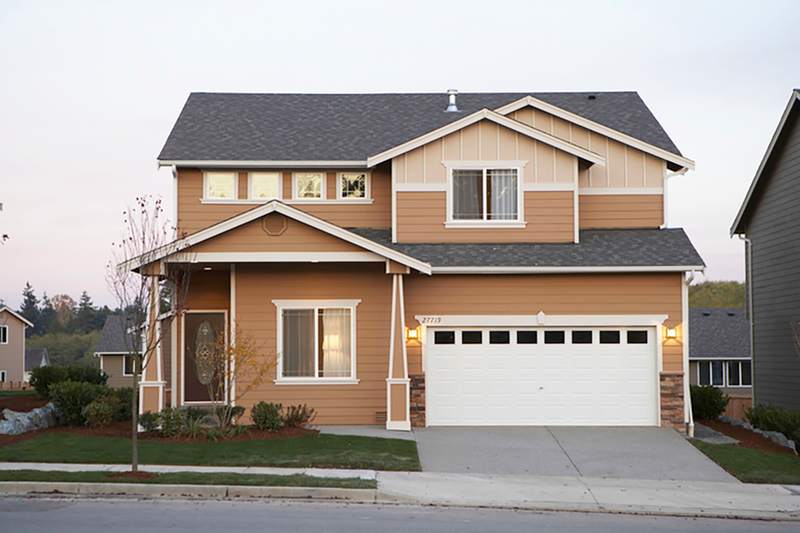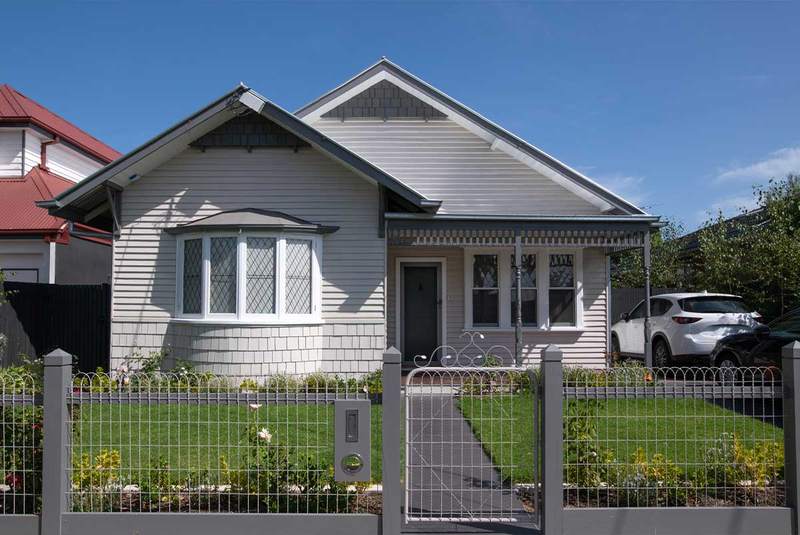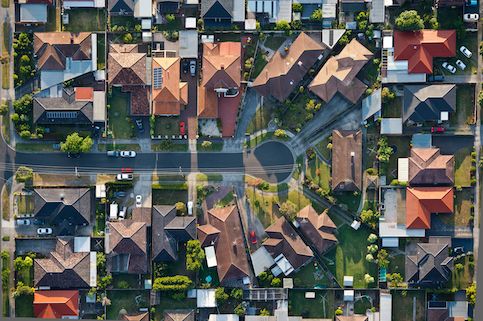Key Takeaways:
- A down payment is the portion of a home purchase representing a fraction of the home’s list price. Conventional loans require a down payment, whereas other loan types may not require this upfront payment.
- A 20% down payment is not mandatory when buying a home; however, this down payment allocation allows the buyer to remove private mortgage insurance (PMI) from their loan.
- Use a mortgage calculator to understand the impact of a down payment on monthly payment obligations. A larger down payment can significantly lower a monthly mortgage payment.
- For individuals who need help securing a down payment for a new home, down payment assistance may be an option. Numerous down payment assistance programs are available; speak to a lender for guidance.
Navigating the path to homeownership involves critical decisions, and the down payment is no exception. It’s the initial stake that sets the foundation for your purchase. The down payment impacts your mortgage size, interest rate, overall loan costs and equity. While most conventional loans require a down payment, there are some loan programs, like FHA or VA mortgages, that have minimal or no down payment requirements.
Our guide below will help you better understand your down payment options and expectations, based on the type of mortgage used to purchase your home.
What Is The Down Payment?
A down payment is the initial lump sum you pay to secure a loan for a purchase you can’t make with all cash. The more money you can afford to put down, the less the lender has to loan to you, which can help improve your mortgage terms. You can use our mortgage calculator to learn how much a specific down payment amount impacts the total cost of your home loan.
For example, if you’re buying a $300,000 house and you make a 15% down payment, you would pay $45,000 upfront. This way, you take out a $255,000 mortgage, reducing your loan size and making homeownership less expensive over time.
Many people think that a 20% down payment is required. But you can get a mortgage with as little as 3% or even 0% – depending on the loan.
If your down payment is less than 20% of the home’s purchase price on a conventional loan, you’ll pay private mortgage insurance (PMI). This additional cost protects the lender in case of default. Conversely, a down payment of at least 20% allows you to avoid this expense.
If you cannot afford to put down 20%, you will be required to take out PMI on the loan. How much you pay for it depends on a few factors, including how much of a down payment you can afford and, depending on the lender, your credit score. PMI fees are usually between 0.46% to 1.5% of the total amount you are borrowing for the house. For example, if your home loan is $500,000, your PMI could be as high as $7,500 each year in addition to your mortgage payment.
A down payment is also one of the most significant steps when purchasing a house for the following reasons:
- Financial commitment: Making a substantial down payment demonstrates to the lender that you are financially committed to the purchase and the property.
- Building equity quickly: A larger down payment means you start with more equity in the property. Doing so gives you a stronger financial position and puts you closer to outright ownership.
- Less risk for the lender: A substantial down payment can make your lender more inclined to offer you better terms, such as a lower interest rate, as they see you as a lower-risk borrower.
- Lower monthly payments: With a larger down payment, your monthly mortgage payments will be smaller. This way, more of your income can go toward other expenses or investments.
- Long-term financial stability: Putting down a significant amount upfront indicates financial stability. It can also reduce the likelihood of becoming “house poor,” where too large of a portion of your income is tied up in housing costs.
What’s Your Goal?
Buy A Home
Discover mortgage options that fit your unique financial needs.

Refinance
Refinance your mortgage to have more money for what matters.
Tap Into Equity
Use your home’s equity and unlock cash to achieve your goals.
How Much Down Payment Do You Need For A House?
Your minimum down payment will depend on the type of loan you’re applying for because lenders and government programs have different requirements. Remember, most home buyers purchase homes with conventional loans, but other financing options are available. Here are the loans you might qualify for and their down payment conditions:
- Conventional loans: These loans don’t have backing from a governmental program. As a result, they usually have stricter standards for credit score, debt-to-income ratio (DTI), and down payment amount. Specifically, first-time home buyers must provide a down payment of 3% or higher, and experienced home buyers must put down at least 5%.
- Federal Housing Administration (FHA) loans: FHA loans are backed by the FHA. Private lenders offering these loans follow governmental regulations to provide loans to borrowers with weaker credit and lower incomes. Because of the more flexible loan requirements, FHA loans require a 3.5% down payment for all buyers, and you will need to pay an origination fee, often between 0.5 and 1% of the full loan amount.
- Department of Veterans Affairs (VA) loans: VA loans are for veterans and active-duty military members and eligible surviving spouses. These loans have minimal financial hurdles and don’t typically require a down payment, but they do come with a one-time VA loan funding fee, due at closing. The amount you can expect to pay depends on a few factors, including the loan amount and whether you are a first-time buyer. The VA offers a funding fee rate chart on its website, and rates range from 3.3% – 1.25%.
- U.S. Department of Agriculture (USDA) loans: USDA loans are for borrowers in qualifying rural areas. These loans have moderate financial requirements, and borrowers don’t have to have a down payment to qualify.
Ready To Become A Homeowner?
Get matched with a lender that can help you find the right mortgage.
The Benefits Of A Larger Down Payment
Home buyers gain several advantages by putting more than the minimum down when purchasing a house. Understanding these advantages can help you plan effectively when considering your finances.
Lower Monthly Payments
When you make a larger down payment, you reduce the principal amount you finance with a mortgage. This way, your monthly mortgage payments are lower because you’re repaying a smaller sum over the life of the loan.
Here’s a comparison of two scenarios using our mortgage calculator to clarify the point:
- Scenario A: On a $300,000 house, you put 20% down ($60,000), leaving you with a $240,000 mortgage.
- Scenario B: On that same house, you put 5% down ($15,000), resulting in a $285,000 mortgage.
You have a 30-year loan with a 6% interest rate. A 20% down payment results in a monthly payment of $1,438.92. On the other hand, a 5% down payment results in a monthly payment of $1,708.72. These numbers don’t include PMI, which will add even more to the mortgage payment.
Remember, you can plug numbers into the mortgage calculator based on your situation to generate estimated monthly payments with different down payments. Using a mortgage calculator is a good way to explore what you can afford before you apply for a mortgage and commit to a down payment.
Save On Interest
Interest is the cost of borrowing money. By reducing the amount, you need to borrow via a larger down payment, you reduce the amount of interest that accrues over the life of the loan. Using the same two scenarios, over the life of the loan, you will pay less in interest in Scenario A because you’re borrowing $45,000 less. The lower principal amount will save you tens of thousands of dollars in interest costs over the life of the loan.
Build Equity Faster
You can measure home equity by comparing your mortgage amount to the current market value of your home. When you make a larger down payment, you start with more equity from day one. This advantage occurs because your loan-to-value ratio (LTV) decreases, indicating a lower debt you owe on the home compared to how much the home is worth.
In other words, your down payment grants you more ownership from the moment you purchase it. Additionally, equity can be advantageous because, as it is more likely to grow (depending on many factors), you may be able to eventually borrow against it to afford future home repairs or improvements and personal expenses.
Save On Private Mortgage Insurance
Remember, reaching 20% equity through a down payment eliminates PMI from conventional loans. Lenders require PMI for borrowers with equity under this threshold, creating an additional cost for the borrower.
Avoiding PMI can save you hundreds of dollars per month. Therefore, if you can’t make a 20% down payment, it’s still a good idea to put as much down as possible. This way, your mortgage payments help you reach 20% equity faster, shortening how long you pay PMI.
Get More Favorable Loan Terms
Lenders consider borrowers with larger down payments lower risk because the debt is smaller. This situation can lead to more favorable loan terms, such as a lower annual percentage rate (APR) or a shorter repayment period.
Take The First Step To Buying A Home
Find a lender that will work with your unique financial situation.
How To Find Down Payment Assistance
Down payment assistance (DPA) programs are available for borrowers struggling to afford the substantial upfront cost of homeownership. Borrowers can obtain help for the down payment and closing costs through grants, forgivable loans, and deferred-payment loans.
In addition, FHA home loans provide lower down payment requirements, and some lenders will allow first-time home buyers to use grants and other DPA programs in conjunction with an FHA mortgage to further lower the cost of buying a home.
There are pros and cons to using some of these DPA programs.
- Pros: These programs may cover closing costs, some down payment amounts and other fees. Some programs offer forgivable loans if you meet certain criteria.
- Cons: Many first-time homeownership programs have specific qualifications, including income and the type of home you can purchase. Most forgivable loans have strict requirements for qualifying, including the amount of time you must occupy the home before the loan is forgiven.
Typically, borrowers who are first-time home buyers or have lower incomes can qualify for assistance. Local and federal organizations from the government and private sector offer this kind of help, but it’s best to check with the individual organizations, starting with your local housing authority’s website, because grants and assistance programs are often listed there.
Not all lenders accept all programs, so be sure to call your lender to determine which program it accepts.
Down Payment FAQ
Here are the answers to some frequently asked questions about down payments to help you during your home-buying journey.
Regardless, your credit score cannot eliminate the need for a down payment. Additionally, a higher credit score often leads to more favorable loan terms, including lower interest rates, reducing overall borrowing costs.
The Bottom Line
A down payment is the initial payment you make to purchase a home. The down payment reduces the amount a lender needs to finance, leading to better loan terms and making homeownership more affordable. While making the minimum down payment to purchase a home increases affordability upfront, a larger down payment lowers costs in the long run. Remember, putting 20% down is an ideal target because it prevents PMI on conventional loans.

Ben Shapiro
Ben Shapiro is an award-winning financial analyst with nearly a decade of experience working in corporate finance in big banks, small-to-medium-size businesses, and mortgage finance. His expertise includes strategic application of macroeconomic analysis, financial data analysis, financial forecasting and strategic scenario planning. For the past four years, he has focused on the mortgage industry, applying economics to forecasting and strategic decision-making at Quicken Loans. Ben earned a bachelor’s degree in business with a minor in economics from California State University, Northridge, graduating cum laude and with honors. He also served as an officer in an allied military for five years, responsible for the welfare of 300 soldiers and eight direct reports before age 25.












